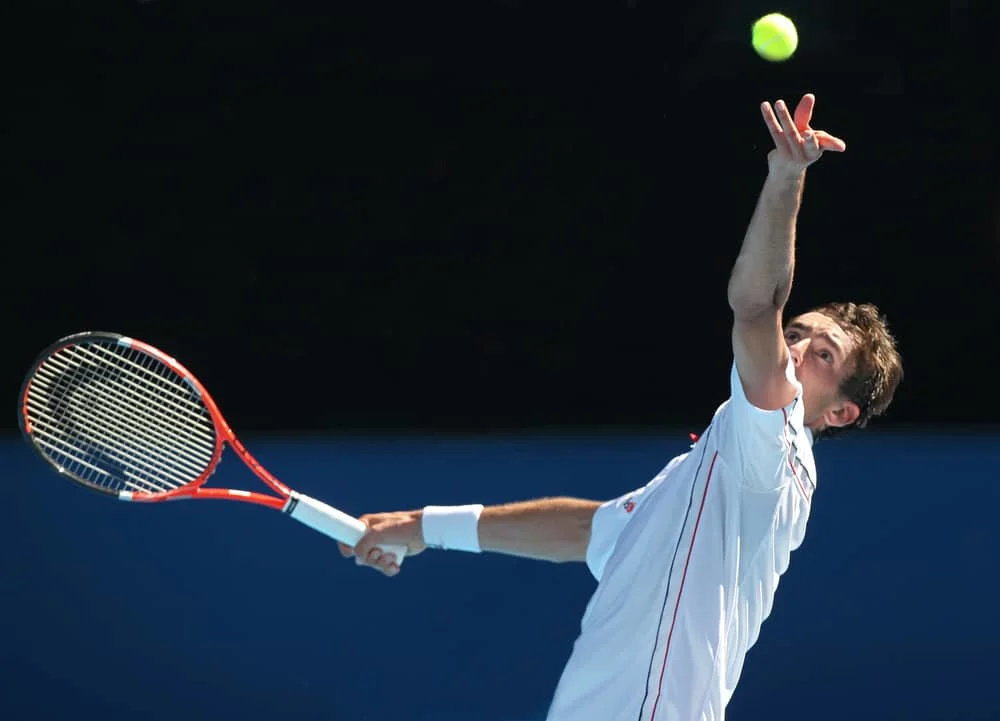
The slice and kick serve are 2 of the most effective serve techniques in tennis, but which one is the best?
In this blog post, I’ll look at the differences between the slice and the kick serve and the advantages and disadvantages of both.
What Is a Kick Serve?
The kick serve requires a different swing path and ball toss compared to flat and slice serves.
You need to toss the ball over your head, or even a touch to the left-hand side.
When you swing you try and serve up on the ball in a 7 to 1, or 8 to 2 motion (if you think of a clock).
For the follow-through, you swing up and over, parallel to the bassline.
For flat and slice serves, the service action is a lot more forward hitting through the ball.
Pros
After landing in the service box the ball ‘kicks’ up more, which can take your opponent by surprise, and make it harder for them to hit a winner.
As the ball has more top spin, it will tend to dip as the ball goes over the net (like when you hit a top spin forehand or backhand). This gives you a lot more margin for error as it means you can aim higher over the net.
Cons
If you don’t get enough depth on the serve into the opponent’s service box, the ball can tend to sit up into their hitting zone, especially if you don’t get enough sidespin on the serve.
Of the three types of serve; kick, flat, and slice, the kick is the hardest to master, and requires a lot of practice to use effectively.
How To Hit a Slice Serve
The slice serve is hit with side spin, by brushing the side of the ball. If you think of a clock, it means hitting the ball in the 2 o’clock position (for right-handers).
Once hit, the ball will tend to swing right to left in the air (opposite for lefties).
Here are the advantages and disadvantages of a slice serve.
Pros
It is generally quite a consistent serve, and for most players, it has a good feel which can give you confidence in matches.
Once you get a good slice serve, with a bit of power, you can really make your opponents move, often out of the court if you’re serving on the deuce side (for righty players).
This can open the court up for you to hit a winner after their return.
Cons
The drawback of a slice serve is that it is easy to read.
You can see it coming, as it is obvious where the server is hitting the ball to impart the sidespin.
It also has a slightly lower margin for error than the kick serve, because it doesn’t have as much top spin to make the ball dip into the service box.
Consequently, you have to be more accurate with this serve, which means it is generally more effective as a first serve, than a second serve.
The Verdict – Kick Serve vs Slice Serve
While the kick serve is more effective on the professional level, a mix of both serve techniques is key. Not knowing what serve will come next is a returners nightmare and what’s separates a good server from a great one.
Of course, it’s not all about these 2 serves, knowing how to use all the different types of serves; flat, kick, topspin, and slice, will be a great asset to your game and ensure you win more points on your serve.
Which one is more effective? Both, but if I had to choose one, it’s the kick serve.
